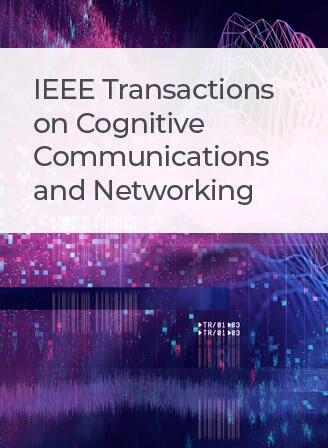On the Performance of Cooperative NOMA Downlink: A RIS-Aided D2D Perspective
IF 7.4
1区 计算机科学
Q1 TELECOMMUNICATIONS
IEEE Transactions on Cognitive Communications and Networking
Pub Date : 2023-08-18
DOI:10.1109/TCCN.2023.3306354
引用次数: 0
Abstract
For future wireless communication networks to be highly efficient with both spectrum and energy, reconfigurable intelligent surface (RIS) has emerged as a practical technology. In this paper, we investigate an RIS-aided cooperative non-orthogonal multiple access (C-NOMA) system serving two power-domain users, where a near user as a decode-and-forward (DF) half-duplex (HD) relay performs device-to-device (D2D) communications for a far user. RIS is configured in time division multiple access (TDMA), which is on the one hand used to support the communication between BS and near user in the direct transmission phase, and on the other hand, for enhancing D2D communications between the two users. In an effort of evaluating the network performance, we derive closed-form expressions of achievable rates, outage probabilities (OPs), and the corresponding asymptotic OPs. The numerical results demonstrate the achievable performance improvements of the proposed cooperative RIS-NOMA system in comparison to that of the orthogonal multiple access (OMA) counterpart. In addition, the proposed cooperative RIS-NOMA system achieves various levels of diversity gains by incorporating different numbers of RIS elements.论合作 NOMA 下行链路的性能:RIS 辅助 D2D 视角
为了使未来的无线通信网络在频谱和能源方面都具有很高的效率,可重构智能表面(RIS)已成为一种实用技术。在本文中,我们研究了一种由 RIS 辅助的合作非正交多址(C-NOMA)系统,该系统服务于两个功率域用户,其中一个近端用户作为解码前向(DF)半双工(HD)中继,为一个远端用户执行设备到设备(D2D)通信。RIS 配置为时分多址(TDMA),一方面用于支持 BS 和近端用户在直接传输阶段的通信,另一方面用于增强两个用户之间的 D2D 通信。为了评估网络性能,我们推导出了可实现速率、中断概率(OPs)和相应渐近 OPs 的闭式表达式。数值结果表明,与正交多址(OMA)系统相比,拟议的合作 RIS-NOMA 系统的可实现性能有所提高。此外,拟议的合作 RIS-NOMA 系统还可通过加入不同数量的 RIS 元素实现不同程度的分集增益。
本文章由计算机程序翻译,如有差异,请以英文原文为准。
求助全文
约1分钟内获得全文
求助全文
来源期刊

IEEE Transactions on Cognitive Communications and Networking
Computer Science-Artificial Intelligence
CiteScore
15.50
自引率
7.00%
发文量
108
期刊介绍:
The IEEE Transactions on Cognitive Communications and Networking (TCCN) aims to publish high-quality manuscripts that push the boundaries of cognitive communications and networking research. Cognitive, in this context, refers to the application of perception, learning, reasoning, memory, and adaptive approaches in communication system design. The transactions welcome submissions that explore various aspects of cognitive communications and networks, focusing on innovative and holistic approaches to complex system design. Key topics covered include architecture, protocols, cross-layer design, and cognition cycle design for cognitive networks. Additionally, research on machine learning, artificial intelligence, end-to-end and distributed intelligence, software-defined networking, cognitive radios, spectrum sharing, and security and privacy issues in cognitive networks are of interest. The publication also encourages papers addressing novel services and applications enabled by these cognitive concepts.
 求助内容:
求助内容: 应助结果提醒方式:
应助结果提醒方式:


